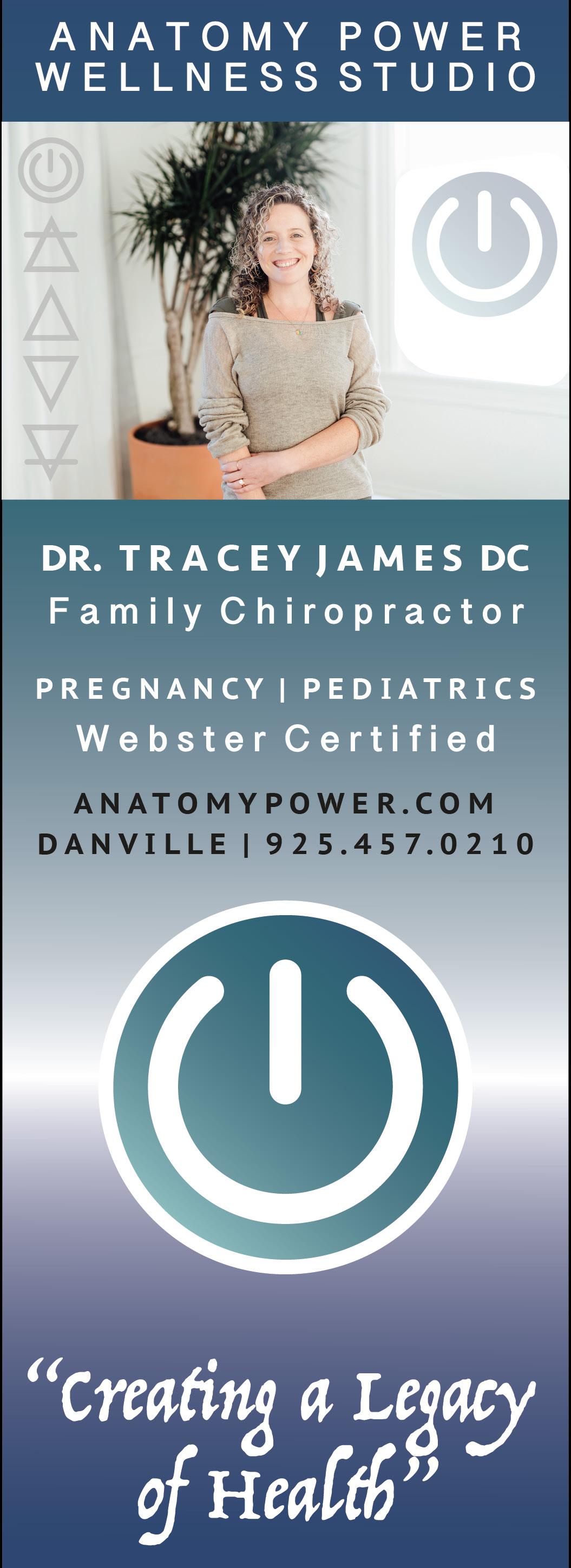
2 minute read
Heart Matters
www.BlackhawkLivingCA.com @BlackhawkLivingCA #BlackhawkLivingCA
By Dr. Tracey James, DC - Anatomy Power Wellness
‘Tis the season for deep breathing. Did you know that when you inhale, your heart rate goes up, and when you exhale, your heart rate goes down? And just like you, each of your heartbeats matter and tell a story about you and the life you’re living. Heart Rate Variability (HRV) is the measurement of intervals between each heartbeat. HRV reveals your neuro-adaptability to stresses of all kinds: physical, emotional, mental, and environmental.
Our bodies are always in a state of physiological, mental, and emotional change. Heart rate variability for a healthy person variates as the mind and body variates — an optimal heart rate variability, an optimal life full of potential. The truth is health can be and is that simple.

A higher HRV reveals that an individual has decreased inflammatory responses, greater resiliency, greater immune response, and greater self-regulation. A low HRV is associated with elevated inflammation, diabetes, blood sugar issues without diabetes, heart disease, fatty liver, negative emotions, depression, and anxiety.
Heart rate variability is a non-invasive, quick, and reliable window into your autonomic nervous system (ANS), which reveals a great deal about an individual’s physical -and even -mental health. The ANS is the master controller for the brain-body connection and has two systems the sympathetic and parasympathetic.
You may have heard of the sympathetic system referred to as “fight, flight, or freeze.” When the sympathetic engage in defending against danger, illness, or stress, HRV drops. The parasympathetic is often referred to as the “rest and digest” or “feed and breed”- the state of healing, rest, relaxation, digestion. When the parasympathetic engages the body performs better in function and heals more optimally. When the body is under persistent or chronic stress, it may prove to perform well in the short term while healing well in the long term may be compromised. Research shows certain lifestyle factors can help improve HRV. These strategies include chiropractic care, exercise, positive emotions, focused breathing (with longer exhales than inhales).
At our chiropractic office, Anatomy Power Wellness, we use Insight, the only HRV system that currently live-streams Galvanic Skin Response [GSR] simultaneous to the heart rate variability reading. The live-stream GSR ensures a person is when a person is in a zero anxiety state during their HRV. The GSR’s sensitivity instantly identifies the presence of mental or emotional stressors as well as if an individual is in an arrhythmic state. Before the scan begins, three biometric standards must be met to ensure the individual is in a state of quiescence.
Chiropractic care builds the amplitude back in to an individual, recharging the ANS as interferences are cleared from an individual’s nervous system. We measure these changes in adaptability and health with regular frequency to support each individual in building reserves and meeting their own unique health goals. Curious to discover your heart rate variability? Join us for our Winter Wellness Exploratorium Friday December 13th 6-9pm. Complimentary HRV reading at the event with this article.











